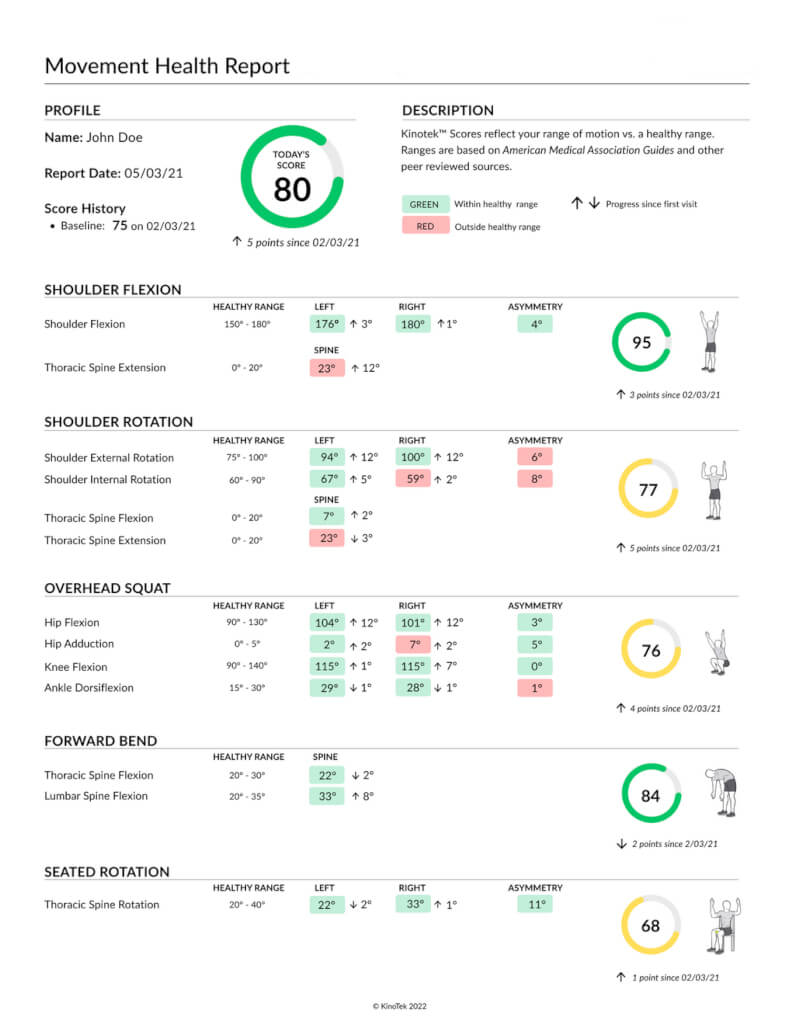3D Movement Analysis for Diagnosing in Physical Therapy
Physical therapy is important for helping people recover from injuries or chronic conditions that affect their ability to move. For effective treatment, it’s essential for therapists to comprehend the distinct movement patterns and restrictions of each patient. This is where the significance of 3D movement analyzing becomes apparent.
By leveraging technology to record and scrutinize movement, therapists can obtain crucial insights into a patient’s condition and formulate customized treatment strategies. This article discusses how physical therapists study 3D movement, including its benefits and the tools they use for analyzing.
Deciphering 3D Movement Analyzing
3D movement examinees use advanced tools and software to study body movement in a three-dimensional space. Physical therapists can use cameras and sensors to track a patient’s movements accurately. This helps them understand the patient’s muscle activity, joint movements, and overall range of motion. You can subsequently use this data to identify movement anomalies, evaluate muscle disparities, and monitor progress over time.
3D movement assessment helps physical therapists see how a patient moves, making it an important tool in therapy. This enables them to formulate customized treatment strategies that target specific problem areas, minimize injury risk, and expedite recovery.
Science of 3D Movement Analysis
Biomechanics forms the basis of 3D movement analyzing, studying how the human body moves and functions. Therapists employ motion capture technology and other measuring instruments to track and scrutinize the movement of individual muscles and joints during various activities. This information is important for identifying areas that need improvement. It also helps in assessing muscle activation and identifying movement patterns that may be causing pain or issues.
Biomechanics is a multidisciplinary area that combines physics, engineering, and anatomy principles. Researchers and therapists can use these principles to study how people move. This helps them better understand how the body works. It also helps them improve the body to prevent injuries and enhance performance.
Analyzing 3D movement in physical therapy has many benefits. Therapists make personalized treatment plans by examining how patients move and what limits their movement, focusing on specific issues. This can aid in minimizing injury risk, speeding up recovery, and enhancing overall functionality.
Analyzing 3D movement can help track progress over time, in addition to its diagnostic and therapeutic benefits. Therapists can adjust treatment plans based on how a patient moves and uses their muscles to achieve optimal results.
Essential Elements of 3D Movement Analyzing Systems
3D movement analyzing systems usually comprise several crucial elements, such as cameras, sensors, and software. Cameras record patient movements from different angles, while sensors track movements of specific joints and muscles. The software processes the gathered data, enabling therapists to visualize and understand the findings.
Advanced 3D motion analyzing systems can have extra parts like force plates that measure body forces during movement. They may also include EMG sensors that track muscle activity. These additional elements can offer therapists more comprehensive data about a patient’s movement patterns and muscle functionality.
3D motion analysis helps therapists understand patients’ bodies and make personalized treatment plans to meet their needs. Therapists use technology and biomechanics to help patients improve their quality of life and achieve better results.
The Importance of 3D Motion Analysis in Physical Therapy Diagnosis
3D motion analysis is a new technology used by physical therapists to identify movement issues and their impact. A useful tool shows how a patient moves and finds areas that are weak or unsteady. Healthcare providers use this information to make treatment plans for problems like weak muscles, limited movement, or compensating movements.
Recognizing Movement Disorders
Movement disorders can appear in various ways, making them difficult to identify without understanding how a person moves. 3D movement analyzing helps physical therapists identify specific conditions affecting a patient’s movement, giving them a better understanding.
This is crucial for identifying health problems that regular tests may not detect. These issues include chronic pain and posture problems. Addressing these issues early on is important to prevent further complications. Regular check-ups may not always catch these problems, so it is important to be proactive in seeking out specialized care.
Evaluating Range of Motion and Muscle Discrepancies
3D motion analysis is extremely beneficial in evaluating range of motion and muscle discrepancies. Physical Therapists can find areas of limited movement or weak/hyperactive muscles by studying how a patient moves. We use the data to make exercises and treatments that focus on these areas, improving function and reducing pain.
Tracking Progress and Effectiveness of Treatment
Ultimately, 3D motion analysis is a crucial instrument for tracking progress and evaluating the effectiveness of treatment over time. By regularly examining movement patterns, Physical therapists can monitor improvement and modify treatment strategies as necessary to attain the best results. This not only confirms that patients are progressing, but also aids in pinpointing areas that may require additional interventions.
In summary, 3D motion analyzing is an essential instrument for Physical Therapists in identifying movement disorders and other conditions impacting movement. It shows how a patient moves. This helps Physical therapists create targeted treatments for specific issues. This improves overall function and reduces pain.
Methods and Devices for Analyzing 3D Motion
3D motion analysis is a crucial element in diagnosing and treating numerous conditions, especially those associated with musculoskeletal problems. Researchers frequently employ various methods and devices in 3D motion analysis.
Marker-Based Motion Capture Systems involve placing small markers on a patient’s body to track movement. Researchers typically place markers on specific anatomical points, such as joints, to facilitate precise movement measurement. Cameras capture the locations of these markers in three dimensions, allowing highly precise motion analysis.
Researchers often use this technique in settings that require detailed scrutiny. It helps in handling complex situations like cerebral palsy and spinal cord injuries. Precise movement assessment is crucial for devising effective treatment strategies.
Neurological Disorders
Researchers can also use 3D movement analysis in managing neurological disorders, such as stroke or Parkinson’s disease. Therapists study how people move and find weak areas. They create personalized treatment plans to improve function and reduce the risk of falls or other problems.
Athletic Injuries and Performance Optimization
Researchers use 3D motion analysis to evaluate how athletes move. It helps identify areas that are at risk of injury or need improvement during sports activities. Therapists help athletes get better and avoid injuries by studying how they move and giving specific treatments for weaknesses.


